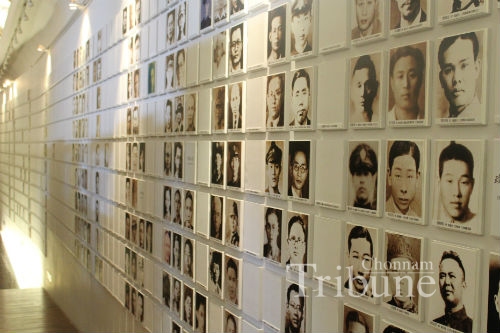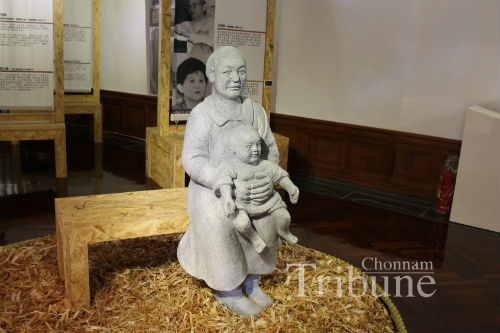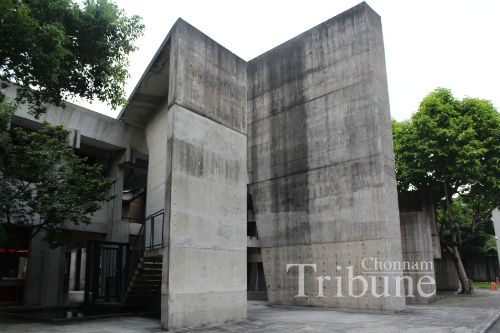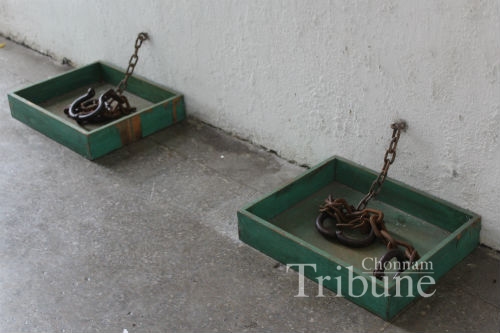대만의 민주화
This article is a special report about Taiwan's historical pain from the 1940s to 1980s under the Government’s political persecution. The 2014 Overseas Coverage Team of the CNU Press and Broadcasting Center visited two historical places related to Taiwanese’ human rights: the National 2.28 Memorial Museum in Taipei City, and the Jing-Mei Human Rights Memorial and Cultural Park in New Taipei City from June 30th to July 4th, 2014. – Ed.

How much do you know about Taiwan? It has many similarities with Korea: both of them suffered during the Japanese Colonial era, and experienced fast economic growth from the 1950s to 1960s. Moreover, the two countries shared similar but slightly different historical pains by their one-party regimes before they were democratized. In the case of Korea, there have been many activities to investigate and reveal the truth - such as the May 18 Gwangju Democratic Uprising. In Taiwan, however, there has yet been any effort made to find out who is responsible for the 228 Massacre and the political terror at that time. Many people do not know about the historical pains behind their present circumstances. The Chonnam Tribune reports on Taiwan’s “Road to Democracy” in this article.
Historical Background of the 228 Incident and White Terror
During the Japanese rule in Taiwan from 1895 to 1945, local Taiwanese adopted Japanese culture. After the end of World War II, the Chinese Nationalist’s Party (KMT) from mainland China moved to Taiwan and considered the Taiwanese as traitors, while at the same time the native Taiwanese did not want the mainland Chinese to be part of their government. Unfortunately, the Taiwanese had been continually discriminated against since the KMT party got most of the higher government posts. They tried to fight against to the KMT Government and asserted their rights but kept being ignored by the KMT.
Meanwhile, late in the afternoon of February 27, 1947, the agents of the Monopoly Bureau’s Taipei Branch used excessive force towards a Taiwan aborigine cigarette smuggler. It became a direct cause of the 228 Incident. Agitated citizens poured out into the streets and the Government suppressed the people without mercy. The case took on a new aspect after the 228 Incident. Martial Law was declared all over Taiwan by the KMT regime and they tried to purge the opposition forces or even innocent people. This is called the Martial Law and White Terror era.
National 228 Memorial Museum

On the first day, the Tribune reporter covered the National 228 Memorial Museum managed by the Memorial Foundation of 228. The building was used to educate Chinese people about the Japanese language during the Japanese Colonial Period. After World War II, it was used as the Provincial Council in Taiwan. At that time, five Council Members were intentionally killed or imprisoned by the KMT government. However, it was only in the 1990s that the victims and their families began to form groups and to speak up after the lifting Martial Law. As a result, ‘The Statute of Handling Compensation for the Victims of the 228 Incident’ was promulgated on April 7, 1995 and the Memorial Foundation of 228 was established by a Presidential Order. The National 228 Memorial Museum officially opened on February 28, 2011.
While being guided by Chief Administrative Officer Cheng Nai-wei, we were able to understand the historical roots of 228 the Incident. There were many impressive displays in the permanent exhibition hall; one of them is “The Wall of the Martyred”. On the white wall, the portraits of Martyrs demonstrate the violation of freedom and the deprivation of human rights at that time. The pictures are classified by their occupation such as teacher, journalist, politician even farmers or students. The statue of a woman holding a baby seems to pray for her husband’s safe return with her sad face which attracts our attention. The statue made us feel the physical and mental distress of the victims’ families who have had to bear their hard life for a long time.
After looking around the hall, Chie-ping Liao, the CEO of the National 228 Memorial Museum and Memorial Foundation of 228 explained detailed stories about their activities such as the handling of compensation, and redressing the truth for the victims and their families. The Foundation has done many things since 1995. Their main activity is to evaluate the list of official approved victims and to handle compensation for the victims. Furthermore, they also endeavor to deliver correct information about the 228 Incident and to promote human rights in Taiwan. Nowadays, they strengthen international exchanges between the May 18 Memorial Foundation and the Nogeulli International Pyeonghwa Foundation in Korea.
Jing-Mei Human Rights Memorial and Cultural Park

The next day, we visited the Jing-Mei Human Rights Memorial and Cultural Park, which was a former military prison where a number of political prisoners were held during the Martial Law and White Terror era under the KMT. The whole building has been well preserved and now serves as the Memorial Center and Human Rights Museum of Taiwan. At the place we met Fred Chin Him-San who was one of the political prisoners held in Jing-Mei and Green Island prisons for 12 years from 1971 to 1983. From him, we heard real stories regarding the actual conditions of imprisonment at that time.

Mr. Fred said it was over 40 years ago but seemed as if it happened just yesterday. He was born in Malaysia and was studying as an international student at Cheng Kung University in Taiwan in 1970. At that time, Mr. Fred was arrested on suspicious of planning to blow up the Taipei City Bank and American New Agency. The KMT fabricated the whole thing to make him a political prisoner and to use various kinds of torture on him. He could not help making a false confession. Finally, he was sentenced to 12 years imprisonment. “During the imprisonment time, I thought that I would rather die than live in that condition.” It seemed to him that Taiwan was very stable in those days but the KMT regime declared Martial Law on May 19, 1949 and nobody dared to speak human rights or freedom during 38 years until the law was lifted on July 15, 1987.
Now he is volunteering at the Memorial to teach what had happened in their country during the White Terror as well as about the need for human rights and freedom in Taiwan and the world. He emphasized the importance of educating young generations during the interview. While having a conversation with him, we felt his sincerity and were deeply moved.

Taiwan's Transitional Justice
We heard it is such a very sensitive issue that Taiwan’s Government cannot conclude who is to be held responsible for the victims of the 228 Incident and White Terror era officially. Some people think it is not worth to look for the ones to blame since many of the people who were involved are all gone and there is no one left to blame. However, the victims and their families emphasize it is important to know what happened and who is to blame and that would be the only ‘real apology’ to them. “Taiwan has not been reached the complete level of democracy in this respect,” Mr. Chen said.
The views of the outside world do not have the right to clarify who should be the one to take the responsible for this tragedy because an issue like this must be handled by its people since it has to do with their identity. So, what can the People of Taiwan do to reach Taiwan’s full democratic potential and prevent the tragedy being repeated? The people who we met in Taiwan suggested some clues to solve this problem. They try to face the real history through telling the story about what happened a few years ago and by encouraging their younger generation to speak up their human rights. In this way, if a situation like the political persecution occurs as a result of ongoing political issues, people will know that they will face the historical responsibility of their own country. Taiwan’s transitional justice has yet to be written but their future would be brighter than before once it is.
By Oh Hee-su, Student Editor

